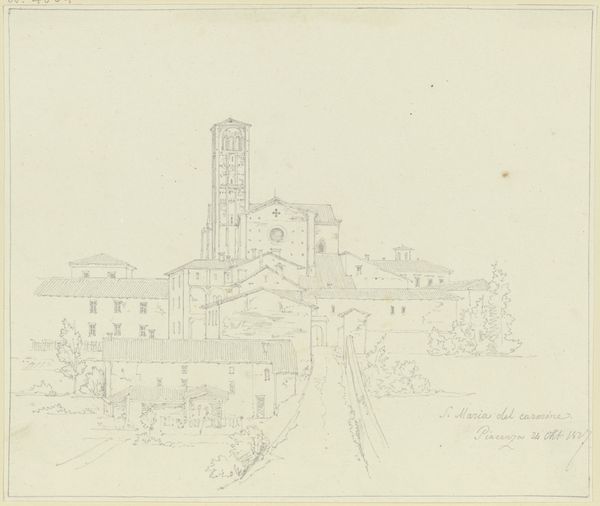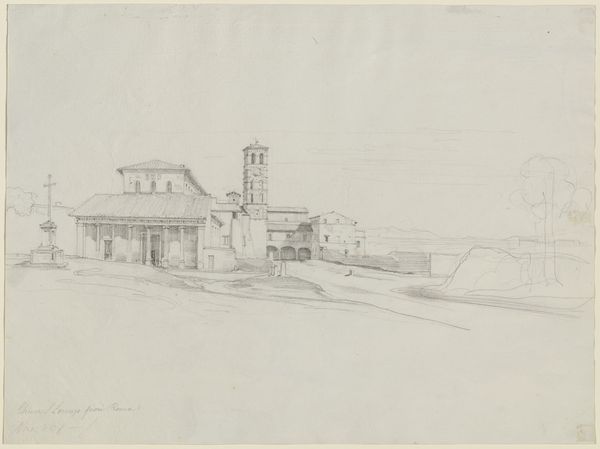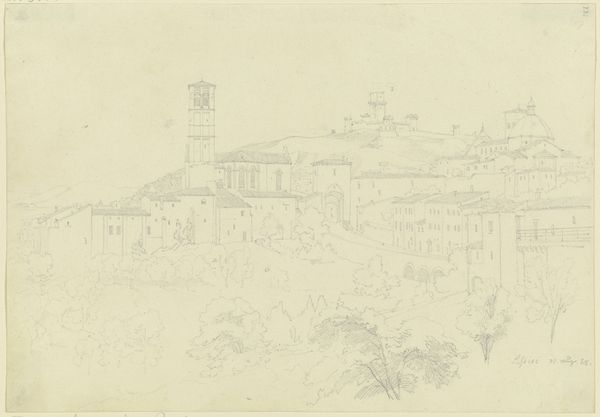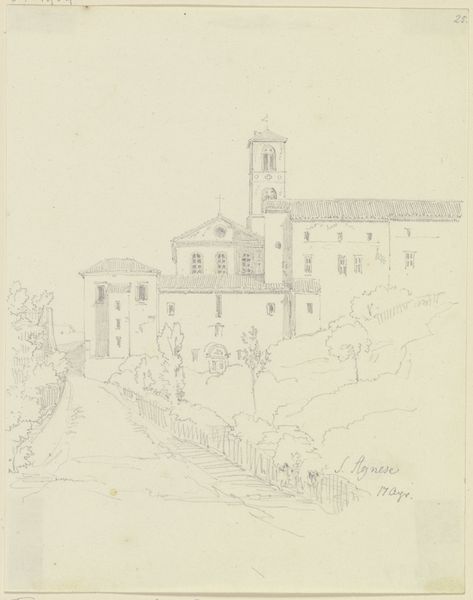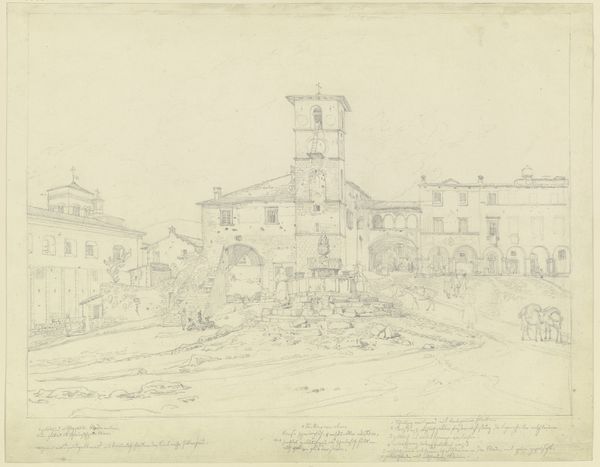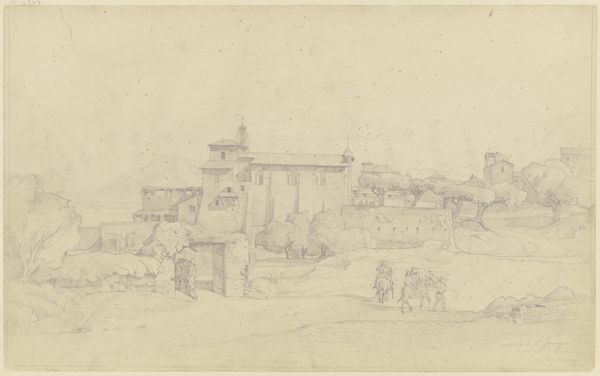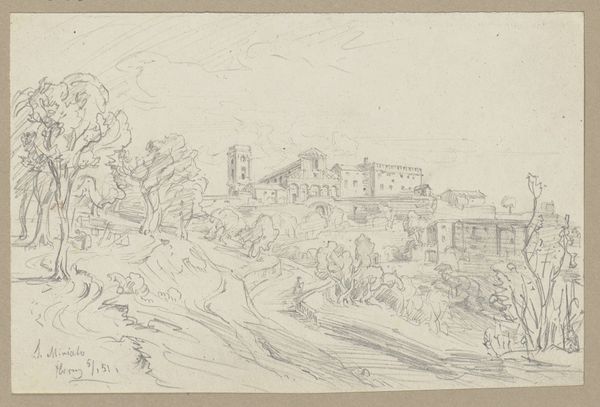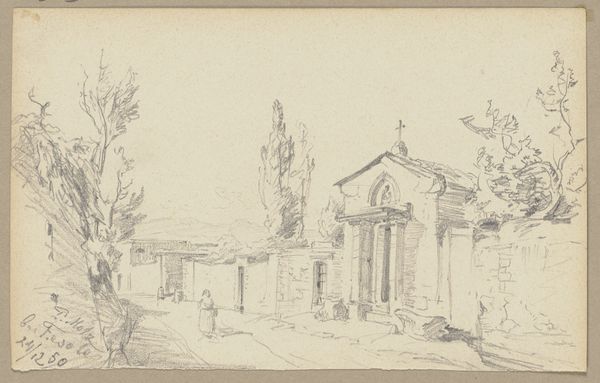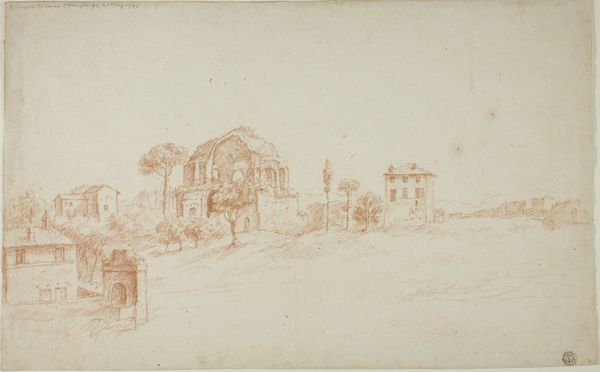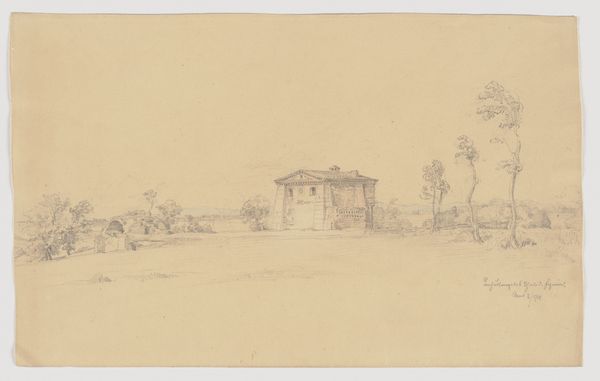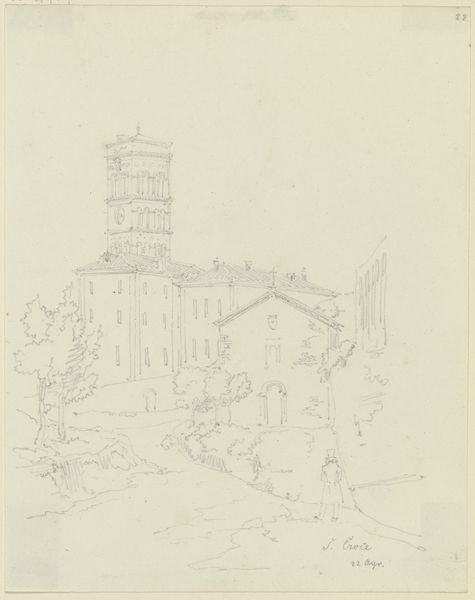
drawing, pencil, architecture
#
drawing
#
landscape
#
pencil
#
architecture
Copyright: Public Domain
Curator: It's quiet, almost ethereal. The lines are so delicate. There's a loneliness to it, despite the presence of the architecture. Editor: Exactly. That pervasive, hushed solitude makes me think of ruins, decay, the inevitable vanishing of empires and societal structures that nonetheless stamp their footprint onto a territory, you know? Curator: Yes! A trace fossil of human ambition. The Städel Museum holds this drawing by Ludwig Metz, aptly titled "Italian Church on a Road," rendered in pencil. He has beautifully captured light as it defines form here. Editor: Absolutely. Metz presents us not with grandeur, but with this unassuming vista. A testament to religious power etched in stone that might crumble away into the dirt over time. One notices a striking austerity that pushes me to think about class disparity. Public space is suggested but not animated by actual people who might benefit from that very access to what looks like knowledge and religious succor. Curator: It's interesting that you mention the missing figures, it could speak to isolation, yes? The building is stoic in appearance; the artist has managed to draw dignity, an almost divine-ordained purpose into architecture. What kind of history might this structure be holding, from wars to the common grief of locals burying loved ones within its churchyard, these all give off the distinct mood of something deeply cherished. Editor: Indeed. Even though we can't fix this image within a specific date range, those buildings scream history. We are invited to speculate the story and conditions of its people by way of absence: were their communities vibrant hubs of connection, of artistic patronage? It may very well have been, and is precisely that thought experiment, that imagined landscape full of real flesh and blood subjects which can and must be held with loving tension to Metz's drawing. The stillness is a stark reminder. Curator: Well said. There is such economy of line here that is truly something to marvel over; Metz managed to suggest more than he stated outright with his composition. I love how this artwork gives our imagination permission to make assumptions about the human impact of a church upon people through the course of countless centuries. Editor: A silent invitation to confront not only architectural magnificence, but the many faces of time, power, absence and our own place within a sprawling story. Curator: Yes, the power of suggestion is such a potent creative tool. Editor: And an equally powerful lens through which to examine ourselves, I might add.
Comments
No comments
Be the first to comment and join the conversation on the ultimate creative platform.
